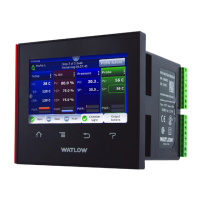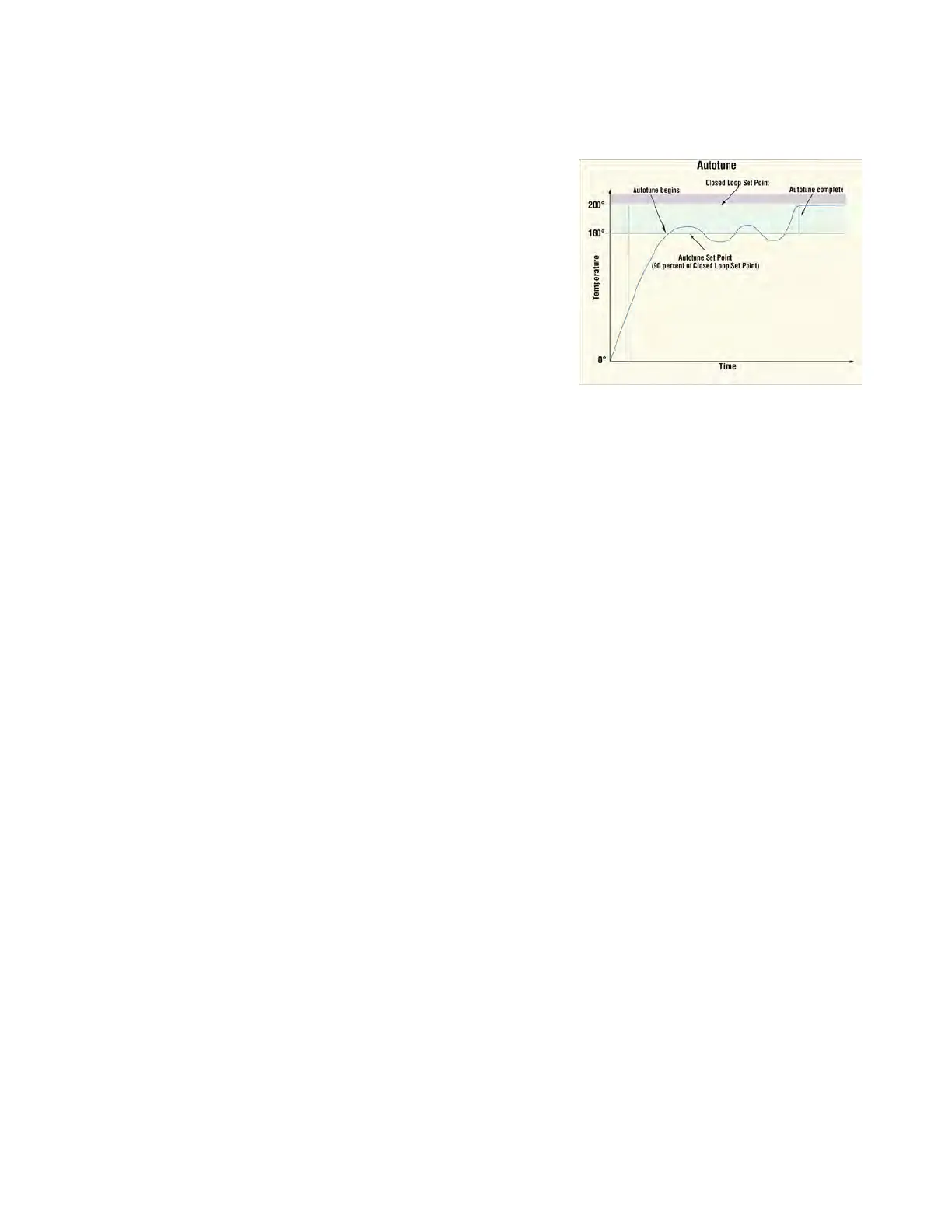Watlow F4T • 106 • Chapter 5 Function Reference
Autotune
When autotuning, the controller automatically selects the PID parameters for optimal control,
based on the thermal response of the system. Five sets of PID values are available. Default
PID values exist for all PID sets, although these values typically do not provide optimal con-
trol. PID values can be autotuned or adjusted manually.
When an autotune is started the current Set Point is used
to calculate the tuning set point. The controller will dis-
regard all set point changes until the tuning process is
complete. For example, if the active set point is 200° and
Autotune Set Point is set to 90 percent, the autotune func-
tion utilizes 180° for tuning.
Autotuning calculates the optimum heating and/or cool-
ing PID parameter settings based on the system's response.
Autotuning can be enabled whether or not TUNE-TUNE+™
is enabled. The PID settings generated by the autotune
will be used until the autotune feature is rerun, the PID values are manually adjusted or
TRU-TUNE
®
+ is enabled. You should not autotune while a profile is running. If the autotune
cannot be completed in 60 minutes, the autotune will time-out and the original settings will
take effect. The temperature must cross the Autotune Set Point five times to complete the
autotuning process. Once complete, the controller controls at the normal set point, using the
new parameters.
To initiate an autotune, follow the steps below:
1. Determine and set the operational Set Point
2. Set the Autotune Set Point (a percentage of the Set Point)
3. Connect and activate a digital signal to TUN (appropriate active level is required)
If need be, there are settings provided to adjust the tuning procedure's aggressiveness. Use
Autotune Aggressiveness. Select Under Damped to bring the process value to the set point
quickly. Select Over Damped to bring the process value to the set point with minimal over-
shoot. Select Critical Damped to balance a rapid response with minimal overshoot.
Set to start or stop automatically tuning the control loop’s PID parameters. This parameter ap-
plies when either Heat Algorithm or Cool Algorithm or both are set to PID.
Options:
• No: if already started, aborts the autotuning process.
• Yes: initiates the autotuning process.
Initiate Autotune Active Level
Choose the signal value at the TUN receiver which causes the loop to start autotuning.
Options:
• High: the loop autotunes when the signal is on
• Low: the loop autotunes when the signal is off
Control Mode
Choose the method the cascade loop uses to set power outputs HT, CL and PWR.
Options:
• Off: power outputs are 0%

